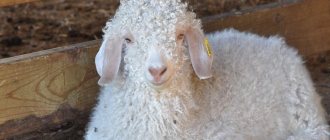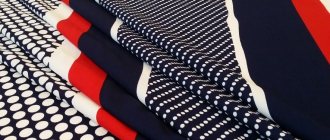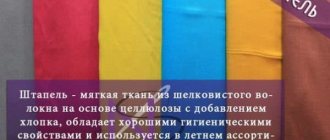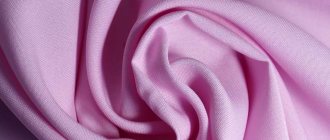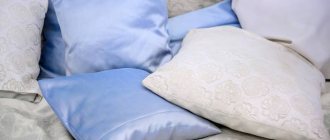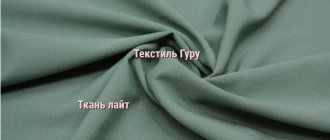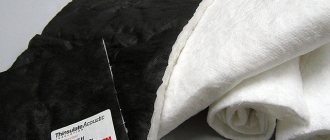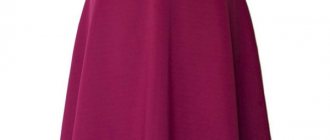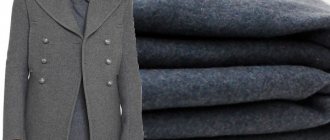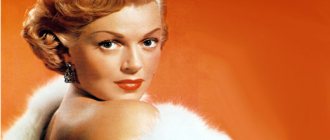Angora is not only the wool of Angora rabbits. Angora is also a fabric. It's not wool, but it's soft like wool and warm like wool. It can be used for sewing warm sweaters and hats, including knitted ones, as well as coats and cardigans...
Although angora is often confused with mohair, they are two different fibers. The confusion arose from the name itself. Not only rabbits bear the proud title of “Angora”, this is also the name of goats that produce mohair yarn. But in this article we are talking specifically about the hair of Angora rabbits, which is longer and more flexible than the hair of ordinary rabbits. Angora fibers are perfect for making noble textiles.
- North Africa and France are considered the homeland of Angora rabbits, where these cute animals began to be raised.
- At the very beginning of the last century, angora was mainly produced in China.
- Other popular producing countries include Chile, France, USA, India and Argentina.
Secrets of angora production
Before producing premium wool fabrics, the initial task is to collect the down of Angora rabbits. About three times a year, factory workers engage in shearing or plucking animals. The latter method is done by hand and is suitable for wool between 7 and 12 cm in length. However, some countries have abandoned plucking, claiming that it is inhumane to rabbits. A slightly simpler method is the process of collecting the shedding, however, in this case, unwanted plant fibers may get into the wool. To prevent deterioration in the quality of the down, rabbits must be brushed regularly, at least twice a week. This procedure helps keep the fur silky and does not allow the fluff to mat, which would be appropriate for non-woven felt material, and not for angora. On average, each rabbit produces about 300 grams of silky and weightless fluff per year.
The “prestige” of the future angora fabric varies depending on where on the rabbit’s body the wool is taken. For high-quality linens, you need down from the top and back of the rabbit, which is often longer and cleaner than the down from other areas. The neck and underside are suitable for collecting second-class wool, in which plant debris is often found. The shortest hair from the legs and buttocks is considered third-class. Grade 4 wool is generally considered unsuitable for making angora yarn.
Angora fabric: description
A whole group of fabrics is united under this name: angora includes knitwear and fluffy materials. They all have such characteristics as lightness, good warming ability, and beauty. The combination of special qualities is provided by fibers from the fur of Angora rabbits.
Their structure is similar to goat hair, from which mohair, the most valuable product, is obtained. But today, angora fabric, according to descriptions and reviews from manufacturers, is primarily knitted materials using rabbit fluff as a cheaper raw material.
Composition, properties, characteristics
Many people value angora for the fineness of its fibers and the incredible softness and fluffiness of the knitted fabric. With a silky texture, this wool is much lighter and warmer than other types of yarn because the angora fibers have a hollow core. Angora yarn is often mixed with merino wool to make the threads more elastic and increase the strength of the fabric. Angora itself is considered an inelastic fiber. In the mixed version, when other natural, artificial or synthetic threads are added to angora, the fabric turns out to be less soft, which is why the price of the fabric falls. To ensure that the wool does not lose its softness, but at the same time maintains a presentable appearance, an average of 20 to 50 percent angora is used in mixed fabrics.
Angora is distinguished from the wool of merino sheep by several characteristic criteria:
- Density: Angora has a lower weight (approximately 1.16 grams per cubic cm) compared to wool (1.33 grams per cubic cm);
- Fiber diameter: Angora is finer than wool, its fiber diameter is 11 microns. However, particularly fine wool options can compete with angora in this parameter. By the way, it is the yarn obtained from fine-wool sheep that unscrupulous manufacturers pass off as angora;
- Elasticity: This criterion affects how the process of processing fibers into yarn will be. Angora has less elasticity; its fibers slide and become electrified during processing. Wool fibers are quite elastic, so they are easier to recycle. This is the main reason for adding wool to angora.
Angora fibers of small diameter have hollow chambers filled with air. This feature makes the angora warm without adding extra weight to it. Products made from angora are very warm and comfortable to wear, and also feel dry due to the properties of the fibers. Therefore, angora is valued not only for the production of stylish casual clothing in a variety of sizes, but also for medicinal clothing that helps people with various diseases, such as sore joints.
What standards are used in production?
The list of standards and technical conditions for the production of knitted fabric and various fabrics from it, including suprem, is described in GOST 28554-90.
In particular, the following requirements are imposed on the canvas:
- The fabric can be made only from natural fibers or with the addition of chemical fibers.
- The threads used in the manufacture of the fabric must meet the requirements of GOSTs 17511, 9092, 29332, 8871, 9706, 14862, 14308.
- The fabric must be made using weaving.
- The fabric can be produced bleached, dyed, printed, plain, with various types of finishes.
- The density of the canvas is 130 - 140 g/sq.m. meter.
- The normalized moisture content of fabric made from combined raw materials must correspond to the calculation standards given in GOST 6611.4.
- Permissible deviations in the surface density of the fabric are 5-6%.
How is it different from mohair?
As we have already mentioned, even today one can often find a false identification of such concepts as angora and mohair. The reason is simple: in the 19th century, angora was the name given to the long white hair of the Angora goat. These animals got their name in honor of the Turkish province where these goats were bred for several thousand years. However, angora is the down of Angora rabbits, and mohair (from the Arabic word “mukhayar”, or “goat fabric”) is the wool of Angora goats.
IMPORTANT! A simple recommendation on how to distinguish mohair from angora: pay attention to the manufacturer’s label. The marking of the fluff in the composition should be indicated there. The combination of the letters WA refers to rabbit fur, and the letters WN mean that goat fluff was used to create the fabric.
The appearance of mohair depends on the fiber, or rather its length. If a goat is sheared twice a year, this number ranges from 10 to 15 centimeters. If the haircut is carried out once a year, the fiber is much longer - from 20 to 30 centimeters. Compared to merino wool, mohair is a rather coarse fabric, so it is not very comfortable to wear on a naked body, although it is stronger than angora. However, there is a type of mohair called Baby Mohair, the yarn for which is created from the fine wool of small goats under one year of age. Things made from this material are incredibly soft.
What kind of angora wool is it?
This is Angora rabbit wool with soft and delicate bristles. Truly high-quality angora fibers have a diameter of about 12-16 micrometers. Animal fluff requires painstaking care; if it is not cleaned, it can easily mat on the rabbit.
Classification of product varieties and types
The variety is influenced by the donor animal, as well as the use of auxiliary raw materials to obtain the matter. Among the famous are:
- Mohair - the raw material is goat down, the length of which can be up to 30 cm. The older the animal, the denser the hair. To get the softest raw materials, I shear goat kids up to 6 months old. In terms of strength, goat hair is better than rabbit fluff.
- Angora - raw material - only rabbit fluff. Length - 20 cm. Its processing is difficult due to constant crawling out. It cannot be fixed. Do not add more than 20% rabbit fluff to products. The main producing countries are England, France and Germany.
- Lana is a high-quality, expensive look on a wool base. It is included in the category of elite fabrics due to the addition of merino hairs. There are two varieties: from the finest or regular fur. Fineness affects the delicacy and softness of the fabric.
- Angora metallic - additionally contains acrylic, polymer and silver-plated fibers. They act as a binding element, fixing the fluff in place.
- Melange is natural fur combined with artificial materials in contrasting colors. This is necessary to create the effect of marble chips.
- Supreme (drawstring fabric) is a thin knitted fabric with the inclusion of lycra. The latter provides strength and durability. Doesn't wear out.
- On acrylic or viscose - an inexpensive warm and soft look. Usually they include elastane or polyester for making knitwear.
- Angora soft is an artificial knitted look, just an imitation. More often it includes polyester and elastane. There are no natural hairs in the composition. The pile may be missing. In combination with Lurex they produce fabric for creating evening wear. Since Lurex is an allergen, it is better to wear things over natural fabrics.
To distinguish between types, marks are made on the raw materials: WN - goat fibers, and WA - rabbit fibers. Sometimes both types are combined at the same time. This is also indicated by notes. Natural shades are white and gray, occasionally black. There is often a shine present.
Angora varieties
The type of yarn and fabric produced depend on the breed and color of the Angora rabbit. Each variety affects the shade of wool and determines the quality and quantity of yarn. The following five types are considered the most popular: French, satin, German, giant and English. Coat shades range from lighter shades such as gray or white to darker shades such as brown and black. It’s easy to guess that white yarn is the brand itself, but a wide palette of other natural shades eliminates this small drawback. It should also be remembered that angora does not lend itself very well to dyeing. The color of the fibers turns out to be quite light, since the fibers do not fully absorb dyes.
It is curious that there are unnatural imitations of angora, for example, fleecy soft fabric, which is created from polyester and elastane. It stretches well and is mainly suitable for upholstery; soft is often used for other interior tasks.
Features of Angora with Lurex
The option with the addition of lurex to the base of the fabric requires special attention. This angora looks elegant and creates a festive mood. From this fabric you can sew an outfit for a special occasion that will be remembered by everyone and will have a stunning effect. A huge selection of colors will definitely not leave you indifferent.
Angora wool - what products are made from angora
The potential of angora is not limited to the usual warm things, for example, fluffy mittens, scarves, socks, sweaters, cozy blankets and bedspreads. This wool fabric is used to create stunning dresses, skirts, hats and elegant, incredibly comfortable coats for both children and adults.
- It is worth remembering that products made from angora are not at all budget, but these expensive things are definitely worth the money.
What type of fabric is this?
Supreme is a knitted material made from cotton. This type of kulirka (or kulirka), the thinnest knitwear used for sewing clothes, including children's, is distinguished by its quality and increased comfort. Thanks to these characteristics, the fabric received the name “supreme” (superior to others).
This material has a pattern; on the front side it consists of braids arranged vertically, and on the back side there are diamonds.
Supreme fabric colors
The density of the canvas is about 140 g/m2. meter. However, the fabric is durable. In addition, it stretches well.
Since suprem refers to knitwear, this fabric is not woven, but knitted. For this, thin cotton threads are used, to which a percentage of elastane can be added. The material is produced on knitting machines.
Fashion trends in angora products
As you know, fashion is cyclical, so many trends return to the catwalks from the recent past. The same applies to current knitted sweaters straight from the 80s. Soft natural wool products look elegant and at the same time comfortable to wear. The question of buying or sewing that perfect fluffy sweater becomes especially acute in the autumn season with the onset of cold weather. All attention to the composition! A wool product should not only attract you visually, but also keep you warm and keep you warm on long winter evenings.
What purposes can this fabric be used for?
Supreme can be used for:
- Making clothes for babies and children - sweaters, rompers, overalls, etc.
- Production of home textiles - towels, linen, etc.
- Sewing clothes for adults, including T-shirts, dresses, sundresses, home clothes.
Things from the Supreme
Advantages and disadvantages of fabric
The obvious advantages include the following features of Angora:
- Soft, pleasant to the touch fabric;
- Wearing comfort: adapts to your body temperature;
- Doesn't itch like some natural wool fabrics;
- Does not cause allergies, suitable for people with sensitive skin;
- Easy to dye to a different shade. However, angora rabbit fibers do not absorb dyes very well, so the dyed yarn ends up being a lighter color than you might expect;
- Light weight.
The fabric still has several disadvantages:
- Angora needs special care; you should read the recommendations in advance;
- May become deformed due to improper use;
- During active wear, pellets appear on the surface quite quickly.
- Affected by moths.
It is possible that for some these disadvantages will turn out to be advantages. Especially if the rules for caring for your favorite angora sweater do not cause stupor, but a willingness to learn new things and care for them with love.
Cost of fabric per meter
The TISSURA Fabric House presents natural fabrics containing angora. The cost of 100% French Angora varies from 10,300 rubles per meter. Mixed options from the Italian brand Agnona with the addition of merino wool and silk cost a little lower - about 8,000 rubles per sewing meter. More detailed descriptions can be found on our website.
Does angora fabric stretch or not?
The question that concerns most girls and women is “does angora fabric stretch and how much”? Almost all types are characterized by softness and elasticity. Stretch well:
- thin knitted fabrics;
- fabrics containing elastane, nylon, lycra.
Moreover, good stretchability can be observed both in the weft and in the warp. Dense fabrics tend to stretch worse.
Recommendations for care and washing
Angora products should not be washed too often; try to do this only when absolutely necessary and by hand. You can slightly refresh the item by hanging it on the balcony. Be sure to read the manufacturer's recommendations for fabric care. If it is 100% angora, do not wash it yourself, use dry cleaning services, but choose a trusted, well-known company.
- Do not soak angora, at least for longer than 15 minutes.
If you must machine wash, choose the cold Wool or Delicate cycle. Don't forget to turn off the drying and spinning modes, and also increase the number of rinses.
- Give preference to liquid powders. In specialized stores you can even find special shampoos for angora. Forget about using bleaches and products that contain chlorine.
- Do not twist or wring out the item too much after washing, let the water drain. Otherwise, the product will stretch easily.
- The water temperature should not exceed 40 degrees, it is better to choose from 30 to 35.
- The main nuance: washing and rinsing should be done in water of the same temperature, so that the slightest temperature fluctuation does not cause the product to lose its shape.
- Do not dry the angora vertically or near heating appliances. We recommend drying it flat on a horizontal surface, such as terry cloth.
- Ironing angora products is not recommended. When dry, they must be stored properly in the wardrobe to avoid folds and creases.
How to properly care
The demand and unusual popularity of ANGORA SOFT is also due to the fact that mixed fabrics do not require special care. Products are washed in a regular machine at 30 °C using a gentle cycle. The main feature is drying. To prevent clothes from becoming deformed, they must be dried in a horizontal position. It is not recommended to iron the products; it is enough to keep them on hangers for some time at room temperature.
Does angora fabric stretch or not?
How to straighten the padding polyester in a jacket after washing
